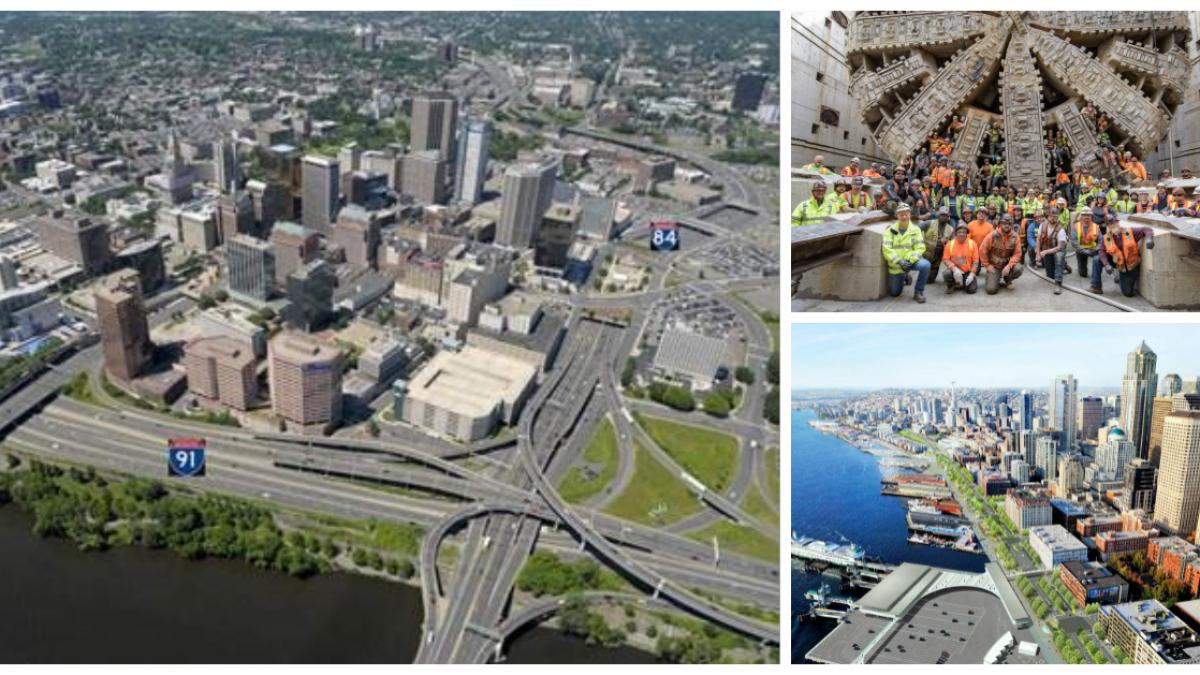I-84/I-91 tunnel proposal is about thinking big again

It's time for the Hartford region to think big again. For too long, we've heard naysayers tell us that the solutions to our infrastructure problems are too big, too bold, too expensive. For too long we've accepted the status quo.
It's time we use Connecticut engineering and Yankee ingenuity to find solutions to pressing problems.
Let's follow in the footsteps of our Connecticut ancestors. They knew long ago, without vision, there is no victory. We can't keep repeating the mistakes of the past 50 years.
Currently, the I-84 and I-91 interchange is ranked as the 24th biggest bottleneck in the country and second in New England. Our highways are in a state of disrepair, the North End of Hartford is cut off from the rest of the city, we're blocked from the riverfront, and, most urgently, our levees are in danger of collapsing.
Most people don't realize that the levees protecting Hartford and East Hartford are threatened by something called sand piping. Sand piping causes erosion underneath the dikes that can lead to collapse. It is the same phenomenon that caused levees to collapse in New Orleans during Hurricane Katrina.
The North End of Hartford is struggling because it is cut off from downtown businesses by the Aetna Viaduct, a multi-lane, elevated highway.
Our beautiful Connecticut River is blocked by another interstate highway, I-91. Imagine, if you could visit Coltsville National Historical Park, walk across a local boulevard and enjoy a park by the river, without a highway blocking you.
Now is the time to act on a once-in-a-generation opportunity to transform our region by pursuing a tunnel solution for I-84 and I-91.
This is more than a transportation project, it's about economic vitality, growth for the region, and creating livable communities. It would put our surface highways underground, separating through traffic from local traffic and reconnecting our neighborhoods with an urban boulevard system designed to accommodate pedestrian, bicycle and automobile traffic. It would allow us to recapture the riverfront, shore up the levee system, and open up space for recreation and economic development.
Some of the current proposals that are under consideration will repair the aging viaduct, but don't address these other concerns.
Worse, they would require shutting down the city for years during construction. Tunneling allows for a turnkey operation that keeps traffic open during construction.
The I-84/I-91 tunnel proposal is about having a lasting plan that solves problems and meets the needs of Hartford and the surrounding towns. It's not cast in stone, and it will involve continual public involvement to address all concerns.
Principal to those concerns is that we recapture our riverfront, repair our levees, reunite the city of Hartford, and have a viable economic and transportation plan for generations — without having to shut down the city for years.
I've looked at tunnel projects across the country to see how they've changed cities. In the U.S., recent highway tunnel projects have been constructed in Seattle, Miami, and Hampton Roads, Virginia. This technology is being utilized around the world and is continually getting better.
In fact, right now, the MDC is constructing a 4-mile, 18-foot diameter wastewater tunnel in our own backyard underneath Hartford without above-ground disturbance.
I recently invited a delegation from Seattle to Hartford to share their experience on their city's tunnel project. There are a lot of similarities between the two cities' infrastructure: They had an aging viaduct, their waterfront was cut off, and their seawall was deteriorating. Seattle opted for a tunnel solution.
Construction has been completed and it will soon open to traffic.
Already, the project has spurred $1 billion in private sector investment with event more anticipated once the viaduct is removed and a 20-acre waterfront park opens in its place.
Think of the investment we would see in Hartford if we built an expansive riverfront park where I-91 currently stands.
Many people are also concerned about financing such a large project; however, I believe it is time for Connecticut to get its fair share of federal funding.
We're a donor state. We send more to Washington than we get back, and we're happy to do it if it means we can fund education, environmental programs, and take care of our men and women in the military.
In the next Congress there will be an infrastructure package. We need to be prepared with a long-term solution for Greater Hartford so we can take advantage of it.
We have a choice to make: We can either accept a 50-year-old mistake or think big and pursue a once-in-a-generation opportunity to restore and revitalize Hartford around its river.
Our predecessors, Samuel Colt and Fred Rentschler, did just that by mass producing precision parts and designing an air-cooled aircraft engine respectively.
To me, the choice is simple. Let's follow their lead, think big again and make this happen.
John B. Larson is the U.S. representative for the 1st District.
http://www.journalinquirer.com/public/i--i--tunnel-proposal-is-about-thinking-big/article_baacabea-bd73-11e8-92cb-afa1595adaf5.html